Uncategorized
now browsing by category
Your Skin is a Giant Sponge
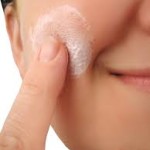
 I walked into a classroom when I was substitute teaching years ago and on the bulletin board was a poster with a sponge cut out as a shape of a hand and over the top it read “Your Hands Are Sponges!” The meaning was that our skin sucks up anything that you apply. Think twice before lathering on the sunscreen or moisturizer. Have you read the ingredients and had a good idea what is going in your bloodstream?
I walked into a classroom when I was substitute teaching years ago and on the bulletin board was a poster with a sponge cut out as a shape of a hand and over the top it read “Your Hands Are Sponges!” The meaning was that our skin sucks up anything that you apply. Think twice before lathering on the sunscreen or moisturizer. Have you read the ingredients and had a good idea what is going in your bloodstream?
Remembering that poster I am extremely careful about what I put on my skin. I try to use only ingredients that I would not be afraid to eat. I moisturize with natural items for example, olive oil and coconut oil. I also now live in Florida and do not have to depend on moisturizers as much as I did when I lived in upstate New York and had hot air heat that was so drying.
I also do not use sunscreen (yes, I live in Florida) and stay in the shade instead. I have no tan but if you live in Florida you do not have a tan. We can tell a tourist from a local by their bronze skin. Of course, tourists are sun-starved so I don’t blame for baking on the beach.
What I do for my skin instead is try to keep it healthy from the inside. Drinking plenty of water is very important to keeping your skin hydrated and eating healthy is a must. Here are some other suggestions:
- Limit alcohol
- Skip sugar
- No fast food…ick!
- Fried food-no thank you!
- Skip the gluten
- Eat raw vegetables everyday
- Take your vitamins
- Limit manicures if they involve putting nail polish on your nails
- No on acrylic nails
- Use olive or coconut oil to moisturize lips
- Use a hat if going out in the sun or take an umbrella
- Stay in the shade
- Limit milk products
- Use a mini trampoline (rebounder) to help the lymphatic system
- Use natural products whenever possible
- Don’t expose your skin to harsh weather conditions. (Some of my most athletic friends have baked and wrinkled skin.)
Here are some great resources on natural products.
Here is a typical list of ingredients on sunscreen:
| 8 | Widespread | Detected in nearly every American; found in mother’s milk; 1-to-9% skin penetration in lab studies | Acts like estrogen in the body; alters sperm production in animals; associated with endometriosis in women | Relatively high rates of skin allergy | Janjua 2004, Janjua 2008, Sarveiya 2004, Gonzalez 2006, Rodriguez 2006, Krause 2012 | ||
| 4-MBC | 7 | Pending FDA approval | Found in mothers’ milk; skin penetration in lab studies | Stimulates estrogen-dependent tumor cells; associated with reproductive disorders and behavioral changes in animals | Krause 2012, Janjua 2004, Janjua 2008, Klinubol 2008, Schlumpf 2004 | ||
| 3-BC | 7 | Pending FDA approval | Found in mothers’ milk; skin penetration in lab studies | Hormone-like activity; delays puberty and impairs reproduction in animals | Krause 2012, Durrer 2007, Schlumpf 2004 | ||
| Octinoxate (Octylmethoxycinnamate) | 6 | Widespread | Found in mothers’ milk; less than 1% skin penetration in human and laboratory studies | Hormone-like activity; reproductive system, thyroid and behavioral alterations in animal studies | Moderate rates of skin allergy | Krause 2012, Sarveiya 2004, Rodriguez, 2006, Klinubol 2008 | |
| UV filters with moderate toxicity concerns | |||||||
| Homosalate | 4 | Widespread | Found in mothers’ milk; skin penetration less than 1% in human and laboratory studies | Disrupts estrogen, androgen and progesterone | Toxic breakdown products | Krause 2012, Sarveiya 2004, SCCNFP 2006 | |
| Octisalate | 3 | Widespread; stabilizes avobenzone | Skin penetration in lab studies | Rarely reported skin allergy | Walters 1997, Shaw 2006 Singh 2007 | ||
| Octocrylene | 3 | Widespread | Found in mothers’ milk; skin penetration in lab studies | Relatively high rates of skin allergy | Krause 2012, Bryden 2006, Hayden 2005 | ||
| UV filters with lower toxicity concerns | |||||||
| Titanium Dioxide | 2 (topical use), 6 (powder or spray) | Widespread | No finding of skin penetration | No evidence of hormone disruption | None | Inhalation concerns | Gamer 2006, Nohynek 2007, Wu 2009, Sadrieh 2010, Takeda 2009, Shimizu 2009, Park 2009, IARC 2006b |
| Zinc Oxide | 2 (topical use), 4 (powder or spray) | Widespread; excellent UVA protection | Less than 0.01% skin penetration in human volunteers | No evidence of hormone disruption | None | Inhalation concerns | Gulson 2012, Sayes 2007, Nohynek 2007, SCCS 2012 |
| Avobenzone | 2 | Widespread; best UVA protection of chemical filters | Very limited skin penetration | No evidence of hormone disruption | Relatively high rates of skin allergy | Klinubol 2008, Bryden 2006, Hayden 2005, Montenegro 2008 | |
| Mexoryl SX | 2 | Uncommon; pending FDA approval; offers good, stable UVA protection | Less than 0.16% penetrated the skin of human volunteers | No evidence of hormone disruption | Skin allergy is rare | Benech-Kieffer 2003, Fourtanier2008 | |
| Tinosorb M | 1 | Pending FDA approval; offers good, stable UVA protection | Very limited skin penetration | No evidence of hormone disruption | Skin allergy is rare | Ashby 2001, Mavon 2007, Gonzalez-Perez 2007 | |
| Tinosorb S | 0 | Pending FDA approval; offers good, stable UVA protection | No evidence of hormone disruption | Ashby 2001 | |||
| 6 other ingredients approved in the U.S. are rarely used in sunscreens: benzophenone-4, benzophenone-8, menthyl anthranilate, PABA, Padimate O, and trolamine salicylate | |||||||
The Trouble With Sunscreen Chemicals
Sunscreen chemicals should be engineered with great care. They are used in products intended for repeated application to large portions of the body. To offer effective protection from the sun’s rays, sunscreens must stick to the skin. So-called active ingredients – substances that filter out UVA and UVB radiation – are present in large concentrations.
Over the past decade dozens of studies have examined the potential health hazards of sunscreen chemicals. These include possible skin irritation or allergy, hormone disruption and skin damage that occurs when sunlight acts on sunscreen chemicals.
The federal Food and Drug Administration has not formally reviewed any of the recent studies in this category. Most sunscreen ingredients were already in use in 1978, when the FDA announced its intention to regulate sunscreen safety. Since then the agency has approved just one sun-filtering chemical – avobenzone,
Active ingredients in sunscreens come in two forms, mineral and chemical filters. Each uses a different mechanism for protecting skin and maintaining stability in sunlight. Each may pose hazards to human health.
The most common sunscreens on the market contain chemical filters. These products typically include a combination of three to six of these active ingredients: oxybenzone, avobenzone, octisalate, octocrylene, homosalate and octinoxate.
Nearly every chemical sunscreen contains avobenzone because it is the best agent for filtering skin-damaging UVA rays. However, avobenzone alone may break down when exposed to sunlight. Chemicals such as octocrylene must be added to the product to stabilize it. This practice has become more common in recent years.
Laboratory studies of several sunscreen chemicals indicate that they may mimic hormones and disrupt the hormone system (Krause 2012, Schlumpf 2001, 2004b, 2008). Some research on animals suggests that oxybenzone and two other sunscreen chemicals – 4-MBC and octinoxate – are toxic to reproductive systems or interfere with normal development. (See Table 1)
Experts caution that the unintentional exposure to and toxicity of active ingredients erodes the benefits of sunscreens (Krause 2012, Schlumpf 2010). But most conclude that more sensitive tests are needed to determine whether these ingredients pose risks to sunscreen users (Draelos 2010, Gilbert 2013).
The most problematic of the sunscreen chemicals used in the U.S. is oxybenzone, found in 80 percent of chemical sunscreens. EWG recommends that consumers avoid oxybenzone because it can penetrate the skin, cause allergic skin reactions and may disrupt hormones (Calafat 2008, Rodriguez 2006, Krause 2012). Preliminary investigations of human populations suggest a link between higher concentrations of oxybenzone and its metabolites in the body and increased risk of endometriosis and lower birthweight in daughters (Kunisue 2012, Wolff 2008).
Generally, chemical sunscreens deserve special scrutiny because most are known to permeate the skin to some degree. Two European studies have detected common sunscreen chemicals in mothers’ milk, indicating that the developing fetus and newborns may be exposed to these substances (Schlumpf 2008, Schlumpf 2010). A 2010 study by Margaret Schlumpf of the University of Zurich found at least one sunscreen chemical in 85 percent of milk samples. Four of the chemicals detected are commonly used in U.S. sunscreens.
The federal Centers for Disease Control and Prevention has detected oxybenzone in more than 96 percent of the U.S. population, based on a representative sampling of more than 2,500 Americans children and adults (Calafat 2008). Higher concentrations of oxybenzone were measured in samples collected from participants during the summer months.
The FDA is considering the approval of two sunscreen ingredients used in Europe – 4-methylbenzylidine camphor and 3-benzylidine camphor. Lab studies indicate they may disrupt the hormone system.
Products in EWG’s sunscreen database that utilize minerals to filter UV rays are made with zinc oxide and titanium dioxide, usually in the form of nanoparticles.
Though no ingredient is without hazard or completely effective, on balance our ratings favor these mineral sunscreens. They do not penetrate the skin, and they are stable in the presence of sunlight.
There are some exceptions. Mineral sunscreen could pose a risk of skin damage if manufacturers do not select forms that are coated with inert chemicals to reduce photoactivity. Nano-powders could potentially lodge in the lungs and reach the bloodstream, where they could damage internal organs. To date, no such problems have been reported. Still, FDA should set guidelines and place restrictions on zinc and titanium sunscreens to minimize the risks to sunscreen users and maximize these products’ sun protection.
Safer, more effective solutions may be on the horizon. The European sunscreen chemicals Mexoryl SX, Tinosorb S and Tinosorb M are promising UV filters not yet approved for use in the U.S.
Active ingredient toxicity
This table summarizes human exposure and toxicity information for nine FDA-approved sunscreen chemicals and four ingredients now being considered by the FDA. We asked these questions:
- Will these chemicals penetrate skin and reach living tissues?
- Will they disrupt the hormone system? Can they affect the regulation of the reproductive and thyroid systems and, in the case of fetal or childhood exposure, permanently alter reproductive development or behavior?
- Can some ingredients cause skin allergy?
- What if they are inhaled?
- Other toxicity concerns?
(Source: http://www.ewg.org/2013sunscreen/nanoparticles-in-sunscreen/)
Day 10 – 30 Day Juicing Challenge
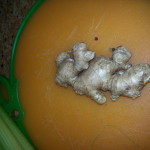
Wednesday. It was not a good day for me. I wasn’t feeling great and was experiencing a little body pain and sore throat. I dragged the extractor out and made a juice that was heavy on the cucumber and that upset my tummy. I burped through the rest of the day. I also had to handle some stressful situations between my mortgage company who says I don’t have a wind policy on one of the rental houses, but I do and they are charging me some outrageous amount for insurance, and my actually insurance broker is dragging her feet on fixing.the problem. So, I had to be on hold, on hold, and then send supporting emails out. Then I couldn’t find my new checks that I just received in the mail….it was chaotic. Typical stressful day where I would have liked to munch down a box of Girl Scout cookies, and what do I hear but the doorbell and there stands this adorable girl scout with the 2 boxes I ordered. Of course you have to buy from the neighbor’s kid.
I must admit, between the burps, i did manage to eat 4 cookies….the chocolate peanut butter kind. Good but not as good as I remembered. So I am meh about it and the rest sits in a baggy in the refrigerator. What? Am I really losing my taste for fake, sugary food???
And by the way, I am only trying to be healthy not perfect.
I also think the Atkins bars that I am eating once a day are doing me no favors. When I eat one or two a day as a meal replacement or a snack, I don’t seem to lose any weight according to the bathroom scale. I think I’m going to pass those to my neighbor who loves them.
 By the night, my throat was feeling sorer and I bought Chinese food for dinner. I had a couple of bites but it tasted bland and disgusting. My taste buds now demand better. After watching a little Sochi I took an Alka Seltzer Plus and went to bed. I woke up around 3:00 probably because of the cookies I ate as I have learned, sugar eaten later in the day will cause insomnia.
By the night, my throat was feeling sorer and I bought Chinese food for dinner. I had a couple of bites but it tasted bland and disgusting. My taste buds now demand better. After watching a little Sochi I took an Alka Seltzer Plus and went to bed. I woke up around 3:00 probably because of the cookies I ate as I have learned, sugar eaten later in the day will cause insomnia.
Today recipe:
- Kale
- Carrot
- Celery
- Cucmber
- Snap peas
- Apple
- Slice of ginger
Day 10, done. Check!
Day 3-The 30 Day Juicing Challenge
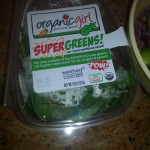
Yup. that’s right. Made it through another juice. I learned the best way is not to sip through a straw but rather drink it in 1-2-3….down the hatch. Works much better.
Today I bought a mix of greens and added it to my extractor. I found the mix at Publix in between the kale and spinach. I thought, heck, it’s a nice mixture of greens and organic so very easy peasy. I also bought some frozen organic raspberries for the coldness (yesterday’s juice was way too warm) and flavor. It was a good idea and made the drink a bit more tolerable.
So, let’s recap. I only juice once a day. The rest of the day I can eat normally as long as it doesn’t have alcohol, sugar or gluten. Yes, there is still plenty of things to eat. I have not eliminated dairy and do have an occasional piece of cheese. In the morning I will have a cup of coffee with Half N’ Half and Stevia. I try not to snack to give my digestive system a chance to rest between meals. This is my 30 day experiment and I’ll let you know if I feel like Superman after the 30 days. So far, nothing but heartburn.
Today’s drink contained:
- Mixed greens
- Apple
- Blueberries
- Cherry tomatoes
- Frozen raspberries
- Carrot
- Celery
Confessions of the Chronically Sick!

More Confessions of a Sick Person
Ten more confessions about life while sick.
Published on February 6, 2014 by Toni Bernhard, J.D.
In October of 2012, I wrote a piece called “Confessions of a Sick Person.” Fast forward almost a year and a half, and I have more to confess. Ten confessions then. Ten confessions now.
Some are lighthearted, some are not. It may not be in my best interests for the people in my life to read these confessions, but I offer them anyway because I feel as if most of them are on behalf of everyone who must live day in and day out with chronic pain and illness. So, here goes…
1. Even when I really want to see people, I’m relieved when they have to cancel.
The reason is simple: their cancelling also cancels the payback I’ll have to go through as a result of the visit. Because there’s not a day when I don’t feel sick (I call it “the flu without the fever”), I’m willing to pay the price so that I can be with other people sometimes. But, as I said, there’s always a sense of relief when I know I’ve saved my body from payback.
Last Fall, I committed to a few nearby events so I could introduce people to my new book. One afternoon, as I was getting dressed to go to an event at my local bookstore, I found myself saying softly to my body, “I’m sorry for forcing you to do this.” I was taken aback by these words until I realized that, although I’d freely chosen to do this event, had the bookstore called and cancelled, I confess…I’d have been relieved.
2. I’m increasingly unable to distinguish nightshirts from going-out-in-public shirts and slippers from shoes.
This can set me up for embarrassment. I have a nightshirt that, to me, looks nice enough to wear out. The problem is, it almost goes down to my knees and so I’m sure that, to others, it looks like the nightshirt that it really is.
And recently, I bought some footwear online from L.L. Bean called “scuffs.” They sure looked like shoes to me, but the first time I wore them out, I was diplomatically told that I’d left the house in slippers. I’m left wondering two things: just what are “scuffs”? and, in my isolation, has a whole new language for clothes passed me by?
3. I don’t brush my dog’s teeth.
The vet impressed on me how important this was—even though none of the many dogs I had as a child ever had their teeth brushed. The thing is, some days it’s a big accomplishment just to brush my own teeth, so I’m afraid Rusty is on his own here.
4. Sometimes, I badly wish I were young again.
I’m not proud of this confession, but the fact is, when I was young, I wasn’t sick. On the other hand, it’s also true that when I was young, I was unhappy a lot of the time. I thought I should always be able to get my way, and when I didn’t, I felt cheated by life. Now that I’m older and (supposedly) wiser, I understand that life doesn’t always serve up what I want it to and that the key to happiness is making peace with the way things are, whether they’re to my liking or not. And so, I’m happier now than when I was young. I really am.
And yet, even knowing that if I were young again, I’d lose this acquired wisdom and thus be less happy than I am now, sometimes there’s no way around it: I wish I were young again. Young and not sick.
5. I no longer know what groceries cost.
I’m fortunate that husband does all the grocery shopping. When he’s out of town, he stocks up on food for me. He’s been doing this for so many years that I rarely know what things cost.
Sometimes he playfully names an item and asks me what I think it costs: a quart of milk, a bunch of bananas, toilet paper. I was always way off the mark until I figured out a way to beat his game. I make a silent guess at what I think the item costs and then multiply that number by four. That usually gets me close.
6. Sometimes I wish my disability were visible, even if it meant that I’d be less functional than I already am.
It’s sad to have to confess to this desired trade-off: less functionality in exchange for not having to respond to “But you don’t look sick.” But there you have it.
7. I may have an unhealthy dependence on the internet…and I don’t care.
When my internet connection goes down, I’m immediately on edge. Then a light bulb goes on in my brain and I think: “No problem. I’ll just Google ‘troubleshooting your internet connection.’” Then I realize I can’t Google anything. Next, I think: “Well, at least I can email a friend in town and see if her internet is down too.” Then I realize I can’t email anybody.
This leads me to conclude that I may have an unhealthy dependence on the internet. This brief reflection is immediately followed by the thought: “I don’t care. Just get my internet up and running whoever or whatever you are that’s keeping me from being online. And I mean NOW!”
8. When I have a health problem not connected to my chronic illness, I usually hide it from others.
Why would I hide it? Because I don’t want anyone to think I’m a serial chronic illness-er (a phrase I just made up). It took me a long time to get some of the people in my life on board with the fact that I’m sick all the time. I don’t want to suddenly lay on them that I also have something like a pesky skin condition or recurring bladder infections. I fear they’d roll their eyes and silently think: “Another medical problem?” So, I leave well enough alone, but I confess that keeping things private in this way increases my sense of isolation.
9. While I don’t wish poor health on anyone, I sometimes want my book How to Be Sick to fall into the hands of a celebrity with health problems who would declare it to be the definitive book on living well with chronic pain and illness.
An embarrassing confession, this one. (Each of you may have your own version of it.) Although I don’t spend my time daydreaming about it, once in a while, the thought creeps in: “Since so many people say they love the book, why can’t Oprah say it? Or Dr. Phil? Or Dr. Oz?” (I’m not picky about celebrities on this matter.)
10. And finally, a repeat confession because it’s truer than ever: When I’m alone, my eating habits are fit only for my hound dog to see.
When I’m alone, I often lick the bowls or plates after I’ve eaten from them. Not only is there food to be had there, but every dish licked is a dish that’s easier to wash.
© 2014 Toni Bernhard www.tonibernhard.com
https://www.facebook.com/how.to.be.book.author (Toni’s Facebook page)
My most recent book is titled How to Wake Up: A Buddhist-Inspired Guide to Navigating Joy and Sorrow.
I’m also the author of the award-winning How to Be Sick: A Buddhist-Inspired Guide for the Chronically Ill and their Caregivers.
About Toni
| Our lives can take an unexpected turn at any moment. Mine did in 2001: I got sick with what the doctors initially diagnosed as an acute viral infection—but have yet to recover. I was a law professor for 22 years at the University of California—Davis until the illness forced me to retire. During those 22 years, I served six years as the law school’s dean of students. I had a longstanding Buddhist practice and co-led a weekly meditation group with my husband (who’s also named Tony!). |  |
|
| I never expected to become an author but, faced with learning to live a new life, I wrote How to Be Sick: A Buddhist-Inspired Guide for the Chronically Ill and Their Caregivers. Truth be told, I began it as a manual for myself, but when I shared parts of it with others, they encouraged me to turn it into a book. And so I did. To my surprise and delight, it has garnered a worldwide following and has won two Nautilus Book Awards: a Gold Medal in Self-Help/Psychology and a Silver Medal in Memoir. It was also named one of the Best Books of 2010 by Spirituality and Practice.My new book, How to Wake Up, is written in the same conversational style as How to Be Sick. I like to write as if I’m interacting with the reader. A short video on the Home page explains how I came to write this second book.
I’m active on several social media sites and enjoy maintaining personal relationships with people from all over the world despite my illness. My blog, “Turning Straw Into Gold,” is hosted on the website of Psychology Today. |
||

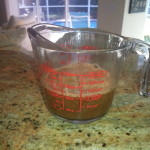
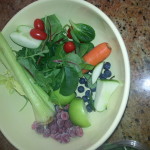
 D5 Creation
D5 Creation